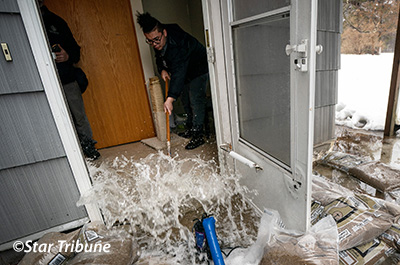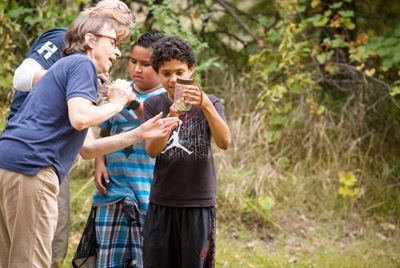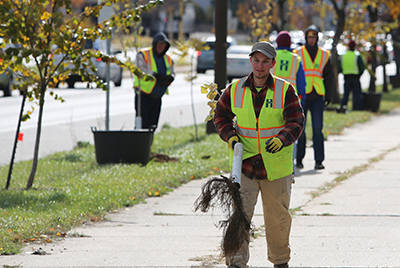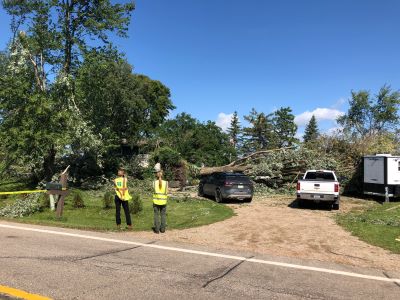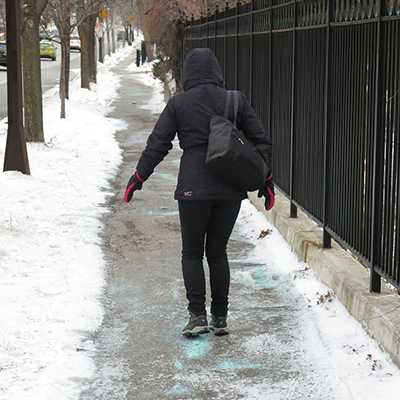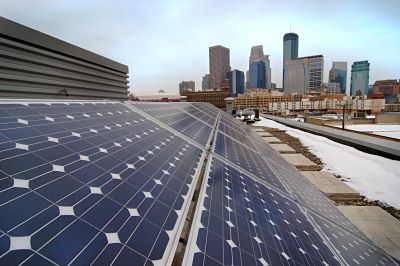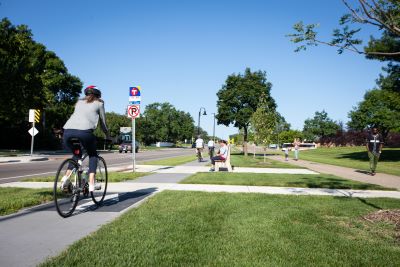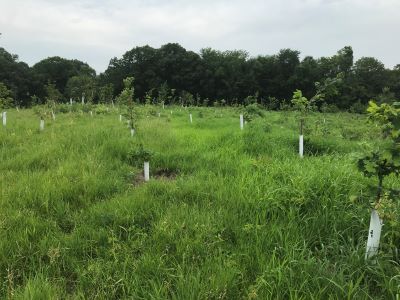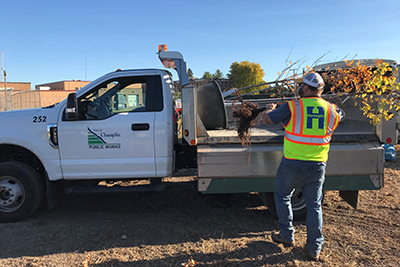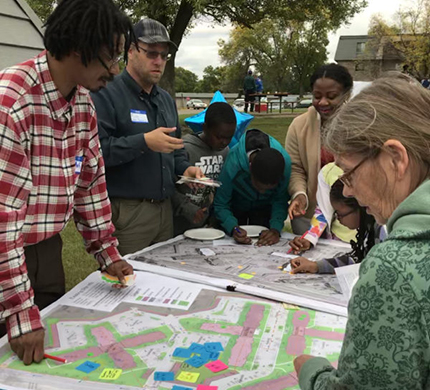|
Protect and engage people, especially vulnerable communities The county must prioritize protecting the health of residents amid the increasing threats of climate change. At the same time, the investments the county makes in responding to climate change present the opportunity to reduce disparities in employment and grow the economy. To have a transformative impact, the county needs the support and engagement from residents, businesses, and organizations to advance collective action and drive systemic change.
Climate resilience
Strategy: Strengthen individual and community resilience Protecting vulnerable communities Like other environmental justice issues, data show that our communities of color, low-income families, and residents with disabilities contribute least to the problem of climate pollution. Despite this, vulnerable residents are the most at risk from negative climate impacts, especially during flooding events, heat waves, and poor air quality days. As the county seeks to protect residents most vulnerable to climate change impacts, we acknowledge that those who have the least capacity to respond to climate change will be most affected. Objective: The county’s response to climate change prioritizes the protection of the most vulnerable residents and advances equitable health outcomesStrategy: Better understand and plan for the health needs of our diverse communities Strategy: Mitigate disproportionate impacts associated with climate change Engaging the public
Climate change affects all parts of the county and all residents, businesses, and organizations. Transformative climate policies must be driven and supported by the public. To advance an impactful climate change response, we need to engage residents, listen to how climate change is impacting them, and collectively build support for solutions. Defining and articulating our collective vision for a climate-friendly future is critical to motivate collective action. Objective: Residents, businesses, and organizations pursue individual actions and support collective actions that drive systems changeStrategy: Educate and engage the public in taking collective action Green jobs
Youth participating in a community engagement session for the Climate Actin Plan suggested providing green job training in schools. They expressed interest in jobs such as building solar panels and working in the renewable energy sector, planting urban gardens and supporting urban agriculture, construction jobs for energy efficiency and extreme weather resiliency, conducting outreach to schools, environmental consultant to companies, transit driver. Objective: County climate investments support broader county goals to reduce disparities in employment and grow the economyStrategy: Maximize green economic recovery and workforce development opportunities
Close Enhance public safety Hennepin County Emergency Management coordinates the countywide emergency management program, maintains public and private disaster resources in the county, and works to ensure that emergency officials, government, private industry, and volunteer organizations take a unified approach to preparing for and responding to emergencies. Within this framework, Public Health Emergency Preparedness coordinates the portion of preparedness, response and recovery activities aimed at protecting the health of residents and staff. The risk assessment process measures the vulnerabilities of communities, including loss of life, personal injury, property damage, and economic injury, resulting from hazard events. Hazards are triggered by natural processes, unintentional human causes, or intentional human threats. These triggers may also interact with each other to produce cascading impacts. Detailed local hazard assessment information provides the framework to develop and prioritize mitigation strategies and plans to help reduce both the risk and vulnerability from future hazard events. Reducing long-term risk
The most cost-effective disaster measures are mitigation actions that reduce or eliminate long-term risk to people and property from hazards. For every dollar invested in disaster mitigation, six dollars are saved in disaster response and recovery costs. Some of the climate-related hazards in the Hennepin County Hazard Mitigation Plan include extreme heat and cold, thunderstorms, extreme straight line winds (aka, “derecho”), tornadoes, winter storms, fires, flooding, power outages, infectious disease outbreaks, and geologic hazards, such as landslides or sinkholes. Objective: Hennepin County assesses, prepares for, and mitigates risks from hazard eventsStrategy: Improve preparation for and response to extreme weather events, flooding, and other climate disasters Objective: Residents, businesses, and organizations understand and are prepared to respond to the impacts of climate changeStrategy:Reduce risks to vulnerable people from extreme heat or cold
Close Increase the resilience of the built environment and protect natural resources Climate adaptation is about developing and implementing strategies to help human and natural systems cope with and become more resilient to the impacts of climate change. The county needs to plan for and respond to increased pressure on natural resources and the built environment, including building sites, roads, and other infrastructure, from impacts such as increased rainfall, extreme weather, and freeze/thaw cycles. There are also many opportunities to use green and natural infrastructure to manage stormwater, improve water quality, decrease the urban heat island, and sequester carbon. Protecting and enhancing our natural areas will provide habitat for native plants and wildlife, increase wellbeing, and make our communities more resilient.
Buildings and transportation infrastructure
While most county roads are kept passable with a stormwater pipe network, these pipes were designed to old precipitation projections and may not adequately keep roads passable given mid-century precipitation projections. In addition, Minnesota is experiencing warmer winters and an increase in freeze/thaw events, which negatively impact pavement systems. Generally speaking, more freeze/thaw cycles will accelerate infrastructure deterioration, especially for older pavements that already have many distresses and cracks in the surface and places where water will impact buildings, facades, sidewalks, and plazas. Objective: Climate risks and impacts to county buildings and infrastructure are assessed and mitigatedStrategy: Reassess policies, design standards, and maintenance practices for county buildings and infrastructure project Increased stormwater and localized flooding The increased flooding poses risks to numerous properties, many of which may not have flood insurance because they are located outside of the mapped 100-year floodplain. While the acute risks posed by surface flooding from heavy rains are potentially covered, the longer-term impacts of increased precipitation such as rising water table levels and the expansion of wetlands and shorelines can jeopardize local infrastructure, private wells and sewage treatment systems, cause flooded basements, and create water-quality impacts. Objective: Risks and impacts from increased precipitation, flooding, and landslides are reducedStrategy: Reassess policies and practices to manage increased stormwater volumes Strategy: Manage the increased risk of landslides due to increased rainfall Strategy: Coordinate regional stormwater resiliency efforts with public entity partners Green infrastructure and resilience in the built environment Building and maintaining green infrastructure to manage stormwater in flood-prone areas, especially on county-owned property, can protect surrounding properties, create green spaces, and make the community more resilient to climate change. The county has developed green infrastructure through programs including transit-oriented development, Environmental Response Fund for the clean up of contaminated sites, natural resources grants, and forestry. Objective: The county employs green and natural infrastructure, including trees, plants, and soil, to build resiliency, especially in areas at higher risks for localized flooding and extreme heatStrategy: Reassess policies and practices to ensure capacity to design, implement, and maintain green infrastructure Strategy: Use county investments to increase resilience in the built environment Strategy: Plant, diversify, and maintain trees throughout Hennepin County and increase the resiliency of the county’s community forest Natural areas and agricultural lands As the Soil and Water Conservation District for Hennepin County, the county is responsible for providing technical and financial assistance to landowners to help manage natural resources, protect soil, preserve habitats, and improve water quality. The county also enforces wetland regulations, establishes conservation easements, protects natural areas, maintains natural resources data, and provides technical assistance to local governments. Native wildlife and plants are extremely sensitive to climate change impacts. Climate change will further disrupt our ecosystems, which are already impacted by invasive species, population growth, and development. Healthy ecosystems play a vital role not only in the health of plants and animals, but of people, too. The trend toward a wetter climate has already added uncertainty and increased the challenge of producing food in a rapidly developing county. Working with residents to preserve open space and improve agricultural practices represent some of the best opportunities to sequester carbon, manage increased precipitation, connect habitats, and improve access to nutritious, locally produced food. Objective: Natural areas and open spaces are functional and diverseStrategy: Plan for and mitigate anticipated ecosystem and open space impacts
Close Reduce emissions in ways that align with core county functions and priorities Analysis of the county’s greenhouse gas emissions inventory shows that there is a path forward to meeting our greenhouse gas emission reduction goals, but only if we work in sync with our partners. The county has a role to play in: Leading by example to reduce energy and use carbon-free electricity and supporting the adoption of these efforts by local governments for broader impact. Reducing vehicle related emissions in the operation of the county's transportation network and supporting transit and transit-oriented development. Reducing emission associated with material use and waste as part of the county’s statutory responsibilities to manage a solid waste management system.
Buildings and energy use
The county is well situated to lead by example in reducing energy use and associated emissions, as well as influencing energy planning, policies and regulations to lessen the impact on the environment, improve communities, and protect public health. Aspects of reducing emissions and meeting greenhouse goals with buildings and energy use are: Conserving energy and using energy more efficiently in existing buildings Electrifying buildings Using carbon-free electricity sources, such as solar and wind, for county operations and making carbon-free electricity more widely available for residents and businesses. Other ways to avoid greenhouse gas emissions with buildings is by reusing buildings and building materials rather than building new and by using of a lifecycle analysis when designing new buildings. Objective: Greenhouse gas emissions associated with buildings and energy use are reduced to meet the state’s Next Generation Energy Act and county emission goalsStrategy: Reduce climate impacts of buildings through innovative and efficient design, including the use of climate-friendly material choices Strategy: Transition to renewable energy sources, reduce energy use overall in county operations Strategy: Support Hennepin County communities in establishing initiatives to reduce greenhouse gas emissions associated with energy use Transportation
As the first Minnesota county to adopt a Complete Streets policy, Hennepin County recognizes the importance of addressing the needs of transit riders, bicyclists, and pedestrians along with the needs of motorists. Transportation emissions have declined slightly in the past decade despite an increase in the number of miles driven due to increased transit options, higher fuel economy standards, and intelligent traffic systems that reduces congestion. But Minnesota’s transportation planners have determined that we will not be able to achieve our state greenhouse gas emission reduction goals without reducing vehicle miles traveled. Managing the land and infrastructure in the county's transportation network creates opportunities to reduce greenhouse gas emissions from vehicles, sequester carbon, manage increased precipitation, and reduce the impact of the urban heat island effect. As our transportation system evolves, reducing air pollutants from fossil fuel combustion will not only help meet our greenhouse gas emission reduction goals, but also reduces disparities in traffic-related health impacts. Objective: Greenhouse gas emissions associated with transportation are reduced to meet the county emission goalsStrategy: Reduce vehicle miles traveled in Hennepin County and throughout the region Strategy:Promote electric vehicle infrastructure regionally Strategy: Use transportation investments to support broader county goals including reducing disparities, improving health, enhancing livability, and growing the economy Waste and material use
This underscores the importance of sustainable purchasing. Significant opportunities to reduce emissions with waste and materials include: Using the purchasing power of public entities to make a positive impact on climate change through procurement decisions. Increasing the salvage, reuse, and recycling of building materials from construction and demolition projects. Reducing food waste and increasing the composting or digesting of food scraps. Shifting consumer behaviors to increase the understanding of the climate impacts of consumer choices and reducing the environmental impacts of waste. Making policy changes that hold producers responsible for good accountable and advance zero-waste initiatives. Objective: Greenhouse gas emissions associated with waste and material use are reduced to meet county goalsStrategy: Prevent food waste and divert organic material from the trash Strategy: Reuse and recycle construction and demolition waste Strategy: Understand the climate impacts of our consumer choices and mitigate the largest impacts Strategy: Advocate for state leadership on zero-waste policies and producer responsibility Carbon sequestration
Protecting, restoring, and managing natural ecosystems, planting trees and plants, and leveraging the ability of soil to store carbon are among the most effective ways to remove carbon dioxide from the atmosphere. Each decision that Hennepin County makes around the use and management of properties it owns and manages presents an opportunity to sequester carbon. In addition, through the county’s role as the Soil and Water Conservation District, there is tremendous opportunity to sequester carbon on private property. Researchers are also working to improve technologies that capture the carbon dioxide generated by burning fossil fuels before it is released to the atmosphere. Carbon capture technology is relatively expensive compared to carbon sequestration through biological processes, but this is a field of research to monitor for developments. Objective: The county sequesters carbon on county-owned property, including along county road rights-of-way and tax-forfeit properties.Strategy: Reassess policies and practices to increase carbon sequestration on county-owned properties Objective: Landowners sequester carbon by protecting and restoring habitat, building soil health, and preserving and planting trees.Strategy: Assist residents to sequester carbon on private property
Close Partner in ways that can be most impactful Climate change is one of the most pressing challenges the county faces because of its significant environmental, societal, and economic impacts on both a global and local level. We know that no one entity can achieve the complex and evolving goal of climate adaptation on its own. The county has clear authority in some areas of this plan, for example operating the county’s roadway network or managing waste responsibly. Other strategies in this plan will require influencing and supporting other organizations that have responsibilities in those areas, like land use and energy. The plan’s success relies on engaging a broad range of stakeholders, including public partners, businesses, community organizations, employees, and residents. The county’s Racial Equity Impact Tool guides how we engage with community, particularly those most impacted by a policy, program, or budget decision, and ensures that we consider how the community may benefit or be burdened by those decisions. Building a more equitable and resilient community will be most effective if the county can align priorities, leverage resources, and foster partnerships.
Public entity partners
Strategy: Pursue strategies with the widest agreement and clearest direction forward Community organizations
Strategy: Establish long-term partnerships to increase engagement and support community-driven solutions (责任编辑:) |

